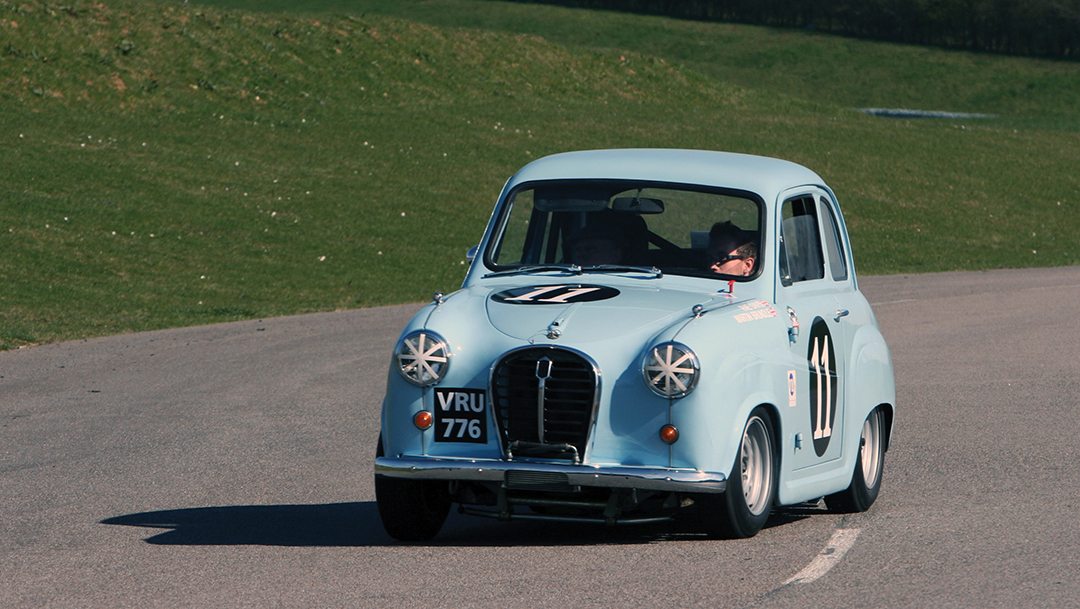Having driven and built many racing cars in my time, the first car that comes to mind is the Ford Sierra Cosworth hatchback I drove in three Willhire 24-hour races. It started off as a production saloon car and then went to Group N regulations. It was an immensely fast car in standard form, but you could raise the boost up on it. The brakes weren’t bad, but on the whole it was a point-and-squirt type of car that wasn’t that fast through the corners. They were a great spectacle, especially during the night stints at the 24-hour races, the brake discs glowed and masses of flame belched out of the side exhausts—a real crowd pleaser from that point of view.
I have to say, without any doubt however, that my greatest racing car was one of those nutty, little Austin A35s, again a great crowd pleaser—especially at the Goodwood Revival. Typically, people would look at the car in the paddock and make comments about it prior to qualifying. After qualifying, they’d come back and take a second glance, as they couldn’t believe the agility and speed the car was capable of on track—it was a kind of disbelief that the car in front of them could put in such a performance. You could probably say the same about the Austin A40, but the car just doesn’t have the looks, or the fun element of the A35. When talking about the A35, I’m referring to the Speedwell class car. The Speedwell cars are quite powerful, well balanced and only susceptible to turning over if, like any other racing car—including Formula One cars—they are hit in the wrong place while racing.
No Subscription? You’re missing out
Get immediate ad-free access to all our premium content.
Get Started



